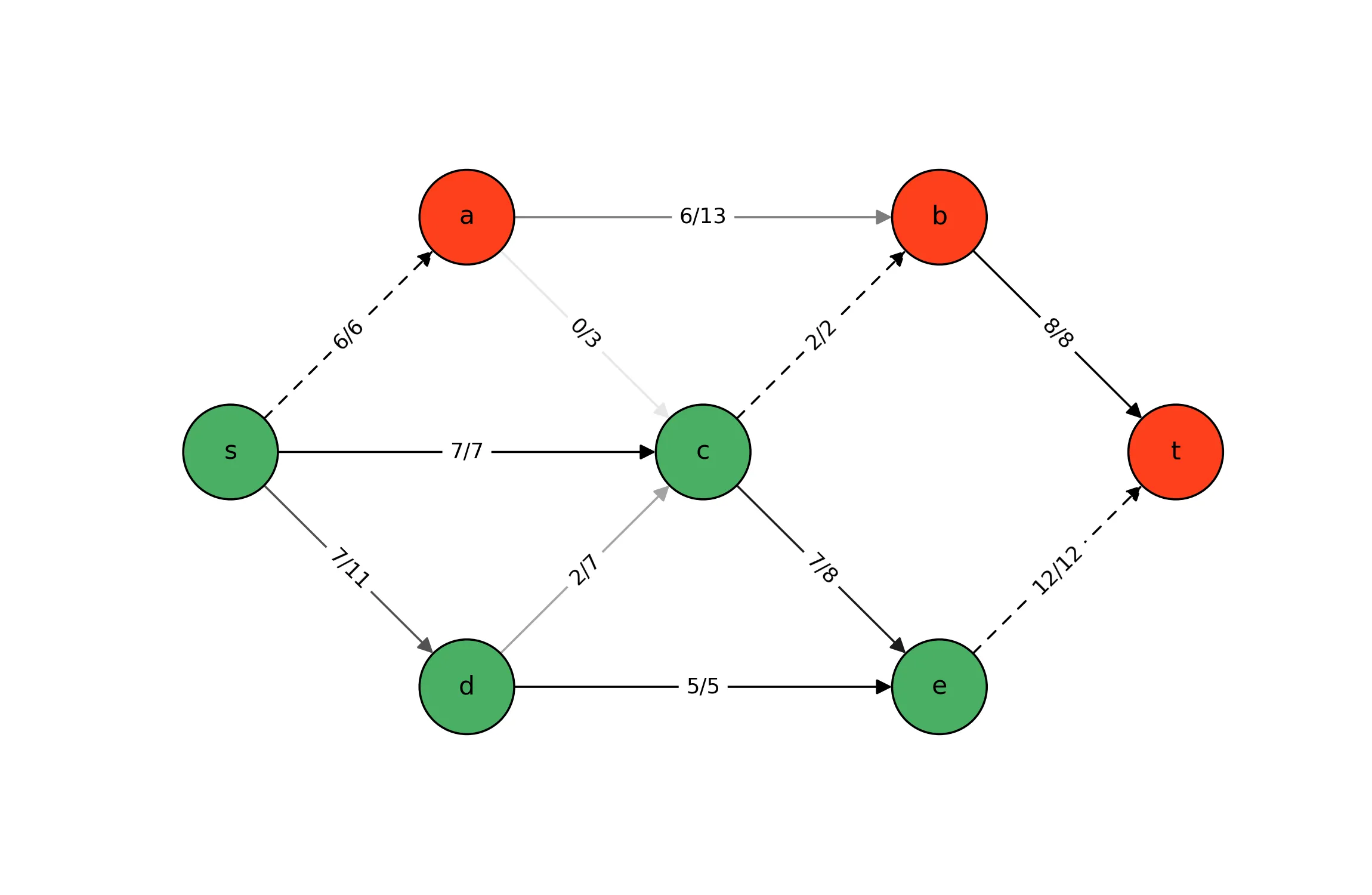Leveraging the gurobipy-pandas Package to Build a Model
As the INFORMS 2023 Annual Meeting comes to an end this week in Phoenix, I thought I should show
how to use the somewhat new
gurobipy-pandas
package that facilitates building models in
gurobipy using pandas objects and moreover compare the code to the standard
gurobipy-only implementation. I came to learn of this package through a presentation by
Robert Luce
at Gurobi and subsequent conversations with Robert and contributor
Irv Lustig
at Princeton Consultants.
If you’re tired of me posting about the Max-Flow LP model, I have bad news. In this post, we again leverage the Max-Flow optimization model as an example. In this previous post we motivate the following linear programming formulation:
Consider first the following implementation of the Max-Flow LP without pandas:
|
|
Perhaps the trickiest part of the implementation is defining
and
and then using those sets to implement the flow balance constraints via
comprehensions in lines 24-25 above. Not that this is particularly burdensome for this example,
the beauty of gurobipy-pandas (and pandas more generally) is that such comprehensions may be
replaced by invoking Series.groupby as in the script below.
|
|
If every node were to have at least one incoming and outgoing edge, then there would be no need for . Though this occurs in the example we present, it is not generally guaranteed. For the sake of generality, we define the set so that we may use it for reindexing to ensure the sum of is defined for every node, if even as zero. In this implementation, we enforce in the variable declaration unlike how we defined the constraint explicitly in the first implementation.
To avoid having pandas as a dependency for gurobipy, the developers elected to make
gurobipy-pandas a separate optional package. As a consequence, the creation of
pandas-compatible variables and constraints is achieved by invoking functions of the
gurobipy_pandas module rather than by the familiar object methods model.addVar,
model.addConstr, and the like.
In short, the main advantages of using gurobipy-pandas and not just gurobipy are (i) that it
facilitates a data-first (vs. model-first) approach, (ii), that it allows data to be loaded easily
from tabular data files, and (iii) that slicing and groupby/aggregating data in
pandas.Series is computationally very efficient.
Which of these two implementations do you prefer? Do you see yourself using gurobipy-pandas in
the future? (Are you already!?) Let me know in the comments!
You May Also Like
Max-Flow/Min-Cut Duality: Implementation & Visualization
In a previous post, we discussed the strong dual relationship between …
Getting Started with Algebraic Modeling Languages
Algebraic modeling languages like JuMP, gurobipy, Pyomo, CVXPY, and …
Introduction to Pyomo and Gurobipy
This morning, I had the honor of hosting a workshop on behalf of the …




